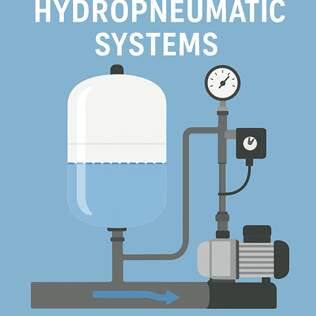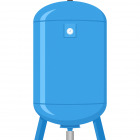Maintenance Checklist for Hydropneumatic Tanks & Pumps
Keeping a hydropneumatic tank and pump running smoothly is less mystique and more routine: a bit of attention prevents surprises, extends equipment life, and keeps water pressure steady. Below is a practical, technician friendly checklist you can use for residential or light commercial hydropneumatic systems.
Quick safety first: isolate electrical power, close inlet/outlet valves, relieve system pressure, and tag out before any hands on work.
Visual & daily/weekly glance
- Check for obvious leaks at the tank, pump seal, fittings, and pipe joints.
- Inspect the pump motor for unusual vibration or smell.
- Confirm the pressure gauge shows within normal operating range while the system cycles.
Monthly checks
- Verify pressure switch settings and operation: note cut in and cut out pressures.
- Listen to the tank: a healthy hydropneumatic tank with a diaphragm or bladder will sound hollow on top, not waterlogged.
- Test the pump run time and frequency; frequent short cycles often indicate low air charge or undersized tank.
Precharge and air management
- Check tank precharge using a tire style gauge at the Schrader valve, with the system depressurized. Set precharge to about
cut in pressure minus 2 psi. - If you use an air compressor for hydropneumatic tank topping, add small bursts only; overfilling forces water into the pocket.
Quarterly tasks
- Clean the pump strainer and inlet filters to prevent cavitation and loss of flow.
- Inspect check valves, foot valves, and relief valves for correct seating and leaks. Replace if they show wear.
Annual inspection
- Drain and inspect the tank interior if accessible, or tap test for bladder failure. Bladders/diaphragms showing collapse or waterlogging need replacement.
- Check motor bearings, electrical connections, and capacitor health; measure amp draw against nameplate rating.
- Corrosion check: look for rust at welds and supports, ensure the tank is properly anchored and protected.
Troubleshooting quick hits
- Rapid cycling: low air charge or faulty pressure switch.
- No pressure rise: pump cavitation, blocked suction, or failed pump.
- Continuous pressure loss: leaking check valve or tank bladder breach.
A few parting practicalities: document every service event, log pressures and run times, and keep spare parts like pressure switches, seals, and a replacement bladder on hand. If you operate a booster configuration or a hydro pneumatic booster pump, periodic vendor servicing may be cost effective and preserve warranty coverage. #hydropneumatic #pressuretank #pumpmaintenance

